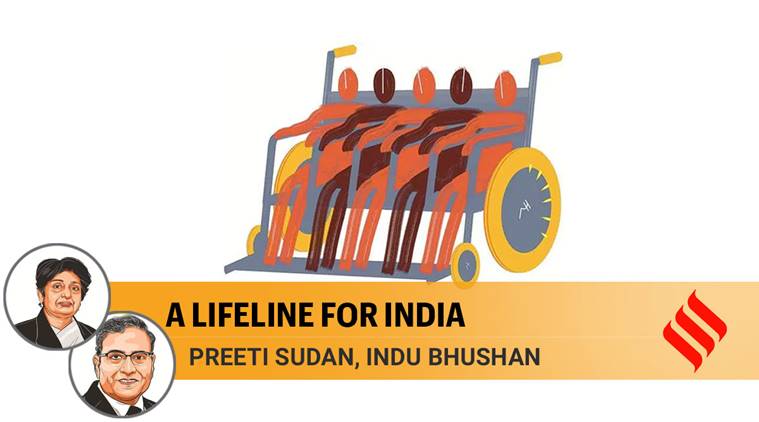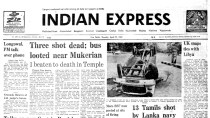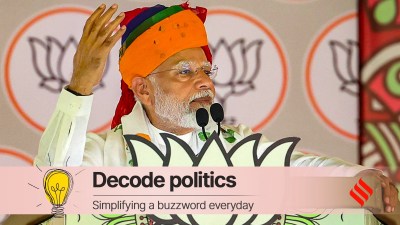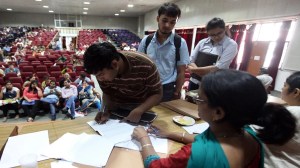- India
- International
In one year, PM-JAY has created a framework for comprehensive universal healthcare
Ayushman Bharat is a conscious attempt to holistically address health, encompassing prevention, promotion and ambulatory care at the primary, secondary and tertiary levels.
 Ayushman Bharat has provided a platform and framework for the country to accelerate its progress towards comprehensive universal health care. (Illustration by CR Sasikumar)
Ayushman Bharat has provided a platform and framework for the country to accelerate its progress towards comprehensive universal health care. (Illustration by CR Sasikumar)
Nine year-old Shiv, suffering from a leaky heart valve, sobbed as his despondent father took him back home after being told by the doctor in Bihar that the surgery he required would cost Rs 3 lakh — more than what his father could possibly earn in three years. He got a new heart, and a new life at Delhi’s All India Institute of Medical Sciences thanks to the timely and cashless treatment under Ayushman Bharat — the Pradhan Mantri Jan Arogya Yojana (PM-JAY). When Shah Mohammad, 50, got treated for a fractured jaw in Gurugram, he could not believe that he did not have to pay a single rupee as he walked out of the private hospital, an exclusive bastion of the wealthy in India thus far. Singri, a 38 year-old, got a new lease of life after a football-sized tumor was removed from his head. Carrying the tumor since his teenage years, he says that PM-JAY helped him become fit and an eligible bachelor in his village in Jharkhand. These are only some of the myriad stories of joy, hope and triumph that have played out over the last few months in the country.
Ayushman Bharat is a conscious attempt to holistically address health, encompassing prevention, promotion and ambulatory care at the primary, secondary and tertiary levels. It promises to bring healthcare to the poorest through two components: Health and Wellness Centres (HWCs) delivering comprehensive primary healthcare through the development of 1.5 lakh HWCs, and PM-JAY, the health assurance scheme delivering secondary and tertiary care to 55-crore people through a health cover of Rs 5 lakh per family per year. Ayushman Bharat has been designed on the fundamental precepts that prevention is better than cure, and that no one should fall into poverty because of expenditure on healthcare, or die, because they cannot afford treatment.
The journey of Ayushman Bharat started in Jangla in Chhattisgarh, on April 4, 2018, as Prime Minister Narendra Modi launched the first HWC. On August 15 last year, he formally announced PM-JAY to the nation from the ramparts of the Red Fort. This promise of free healthcare to the poorest 55 crore people in the country would help them avoid the catastrophic healthcare expenditure that pushes an estimated 6 crore below the poverty line each year in India. A hugely ambitious and truly transformative scheme, PM-JAY has sought to cover a population larger than that of Canada, United States and Mexico put together. A year ago, on September 23, the prime minister launched the scheme in Ranchi, Jharkhand.
A year later, the dream of Ayushman Bharat, as envisioned by the prime minister, is on its way to becoming a reality and is off to a promising start. More than 20,000 HWCs have been made operational. More than five crore people have been screened for a whole range of common non-communicable diseases. Under PM-JAY, more than 45 lakh hospital admissions have taken place for cashless treatment in more than 18,000 empaneled hospitals across the country, resulting in savings of more than Rs 13,000 crore for the beneficiary families. Every three seconds, a beneficiary is being treated, and the numbers continue to rise.
Ayushman Bharat has provided a platform and framework for the country to accelerate its progress towards comprehensive universal healthcare. Envisaged as an alliance with states, PMJAY has, in several states and union territories, an opportunity to extend the benefits to far larger numbers, beyond those covered under the scheme. Eleven states/UTs have expanded the coverage to include almost all families. In addition, 23 states/UTs have expanded the beneficiary base with the same benefit cover as under PMJAY or lower in some cases. Several states have merged their many ongoing schemes with PMJAY to make implementation simpler for both beneficiaries and participating hospitals. They don’t need to deal with different target groups, rates and reporting systems. Karnataka has merged seven different existing schemes into one, while Kerala has merged three different schemes.

The private sector has played an active role in the early pick up of the scheme. More than half of the empaneled hospitals are private. Over 62 per cent of the treatments have been done by private hospitals. PM-JAY has created a massive demand for private (and public) sector services by making hospital facilities accessible to 55 crore people. In tier II and tier III cities, private sector hospitals are already witnessing an almost 20 per cent increase in footfall. Some hospital chains are already contemplating plans for expanding their capacity or opening new facilities in underserved areas. Public sector facilities have streamlined their processes so as to improve service quality and amenities with funds from PMJAY.
With its focus on delivering healthcare to a large population, Ayushman Bharat is set to become one of the largest drivers of jobs in the country. With the setting up of 1.5 lakh HWCs by 2022, an expected 1.5 lakh jobs will be created for community health officers, including 50,000 multi-purpose health workers. It has generated an estimated 50,000-60,000 jobs in the first year itself and is expected to add over 12.5 lakh jobs in both public and private sectors over the next three to five years, with 90 per cent of them in the healthcare sector and the remaining in allied sectors such as insurance and implementation support. As more people seek in-patient care, 1.5 lakh beds will be added in existing and new hospitals. This, in turn, will lead to the creation of around 7.5 lakh new opportunities for doctors, nurses, technicians, pharmacists and frontline healthcare workers such as Pradhan Mantri Arogya Mitras (functionaries who are the key interface between beneficiaries and the scheme).
This ambitious scheme is supported by a strong IT backbone that facilitates the identification of beneficiaries, records treatments, processes claims, receives feedback, and addresses grievances. A live dashboard helps in monitoring and improving performance, based on real-time data and regular analysis. This platform also helps states to compare their performance. A strong and sophisticated fraud prevention, detection and control system at the national and state level has proved to be critical for PM-JAY to ensure that frauds are largely prevented. If attempted, they are quickly detected and strong action is taken.
A good beginning has been made, but a lot needs to be achieved before we reach our goals. Opportunities that lie ahead need to be effectively harnessed. One such lies in exploiting the potential of collective bargaining and leveraging economies of scale. This could deliver more affordable and quality healthcare by negotiating better prices for various devices, implants and supplies, and also leveraging other policies such as Make in India. Ensuring quality treatment of patients by prescribing and ensuring adherence to standard treatment protocols is another opportunity waiting to be fully harnessed. Further strengthening the linkage between HWCs and PMJAY will improve the backward and forward referrals and enhance overall healthcare services, especially to the poor. “Green field” states with no past experience of implementing healthcare schemes have to work harder to scale up their progress. All states will need to make sincere efforts towards providing seamless health services to the last mile.
As the Ayushman Bharat revolution unfolds, we are optimistic that India will make sure healthcare is no longer a privilege and is available to every Indian. Thus, many more stories stories of joy, hope and triumph will be written, like those of Shiv, Shah Mohammed and Singri, and of so many others will be assured the gift of life and good health.
(This article first appeared in the print edition on September 23, 2019 under the title ‘A lifeline for India’.
Sudan is secretary, Health and Family Welfare, Government of India. Bhushan is CEO, PM-JAY.)
EXPRESS OPINION
More Explained
Apr 23: Latest News
- 01
- 02
- 03
- 04
- 05









































